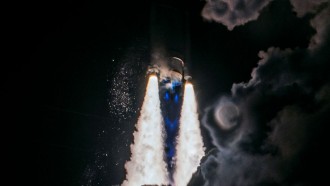The drama happening in California headlined by Uber and the state's auto regulators ended with a dramatic pullout of Uber's entire self-driving fleet. The vehicles were promptly arrayed on board Uber's own Otto long-haul trucks, which were last seen ambling ponderously toward Arizona.
The Curious Case Of The Uber Permit
The surprising turn of events was set in motion after the California Department of Motor Vehicle demanded that Uber secure the necessary permit before it can continue testing its self-driving Volvos in San Francisco. This is based on the California regulation that mandates all self-driving cars must get a permit and pay $150 for testing on its public roads.
Uber has dismissed it as nonsense, claiming that a technician is present inside the vehicles at all times. During testing, therefore, the ride-sharing company believes that its vehicles are not yet fully automated, exempting it from the state's rule on self-driving vehicles.
"It's hard to understand why the DMV would seek to require self-driving Ubers to get permits when it accepts that Tesla's autopilot technology does not need them," Uber's Anthony Levandowski said. "We asked for clarification as to specifically what is different about our tech from the DMV, but have not received it."
When the pullout was imminent, California officials have been cited saying that Uber's fault stemmed from its inability to identify that its fleet is consisted of test vehicles.
That sounded more like a problem of semantics.
Automated Vehicle And Data Sharing
But there are some observers who point to a provision in the permit that will effectively compel Uber to report accidents as well as how frequently the system disengages and the human driver takes over. The perception is that Uber is not willing to share these data since DMV publishes such information in a public website.
It is important to note, however, that other companies testing self-driving vehicles in California such as Google and Tesla have applied and have been granted permits without any fuss. It could indicate that the regulation itself is not that unfair.
Arizona Welcomes Uber
At this point, the rest of the world could only speculate and witness the standoff. It is also quite hard to determine the winners and losers in this saga save, of course, for Arizona.
The state's governor Doug Ducey has actively joined the squabble, egging Uber to ditch California, touting Arizona's credentials as a location friendly to innovation and technology. The state already hosts Waymo and Ford's self-driving vehicles.
Uber itself has reportedly considered Tucson as a pilot city for its self-driving fleet before it finally settled on Pittsburgh. It was said to be bypassed due to the characteristics of the city's streetscape. Back in 2015, the sheer number of students, trolleys, and bikes in the city made it a difficult place for a self-driving car to navigate. The same may no longer be the case today, as Uber's automated system must already have evolved.









